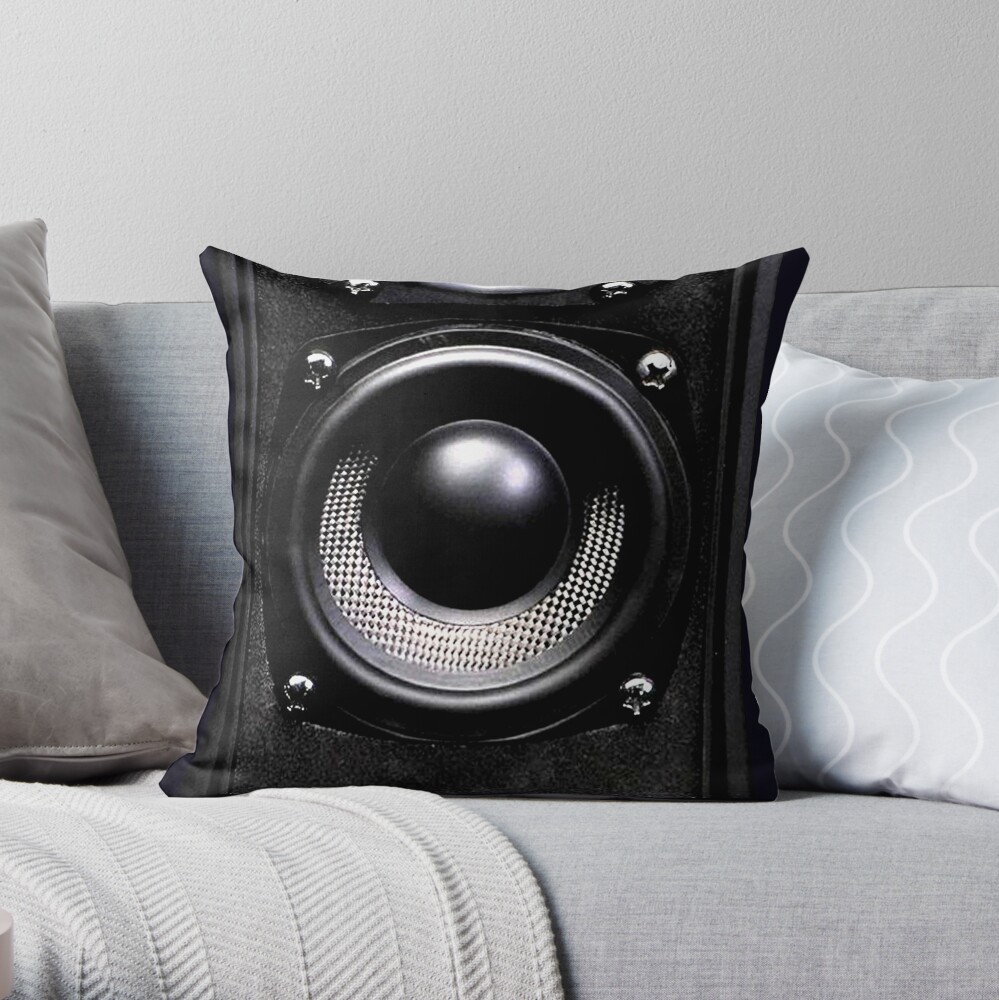Considering this is KEF’s cheapest speaker this is quite good!
-
WANTED: Happy members who like to discuss audio and other topics related to our interest. Desire to learn and share knowledge of science required. There are many reviews of audio hardware and expert members to help answer your questions. Click here to have your audio equipment measured for free!
You are using an out of date browser. It may not display this or other websites correctly.
You should upgrade or use an alternative browser.
You should upgrade or use an alternative browser.
Kef Q150 Bookshelf Speaker (review by Erin)
- Thread starter sweetchaos
- Start date
-
- Tags
- kef
i wouldnt buy a kef coax, shit overcomplicated woofers with no throw at all.
No "throw"?
Colonel7
Addicted to Fun and Learning
Speaker throw ...


Wouldn’t a sine sweep do the same and be more repeatable?If it is what I think I am hearing, it is exactly the resonance issue I heard with Elac speaker that created a lot of fireworks. You need a clip like this that is borderline having that resonance. Then the speaker hits on the precise note and it gets amplified. Your track sounds very similar to the one and only track I have that brings this to surface.
They have coax models also with separate woofers…i wouldnt buy a kef coax, shit overcomplicated woofers with no throw at all.
dc655321
Major Contributor
- Joined
- Mar 4, 2018
- Messages
- 1,597
- Likes
- 2,235
I'm familiar with that song. That is definitely a speaker resonance, not inherent to the source. None of my speakers have such a strong resonance playing that part.
Not sure if it's a flaw with that particular Q150 or if it's the resonances around the 1khz mark being triggered. Oftentimes with cheaper speakers that have multiple significant(enough to show up in measurements) resonances, even if they're not too bad on a sweep, if you get the exact right frequency it's very noticeable.
That happened to Amir on the Elac UB52.
I don’t know if I could inflict that track on my q150s - no wonder they’re shrieking
I had an IQ series center channel that made awful noises at certain frequencies. I opened it up and there was a silver label that had fallen off the woofer basket and was partially stuck to the speaker cone so that it flapped at certain frequencies.
A normal sweep runs too fast to hear it. I had to run a narrow range sweep to hear it that way which requires knowing its frequency. My measurements showed it but Erin's don't which makes this harder.Wouldn’t a sine sweep do the same and be more repeatable?
moonlight rainbow dream
Active Member
- Joined
- Nov 24, 2020
- Messages
- 160
- Likes
- 239
Yap... first thing first is check for any loose screws... e.g. binding post, mounting bracket, etc. Felt like an idiot a couple of times before with stuff like this.
From anecdotal memory though (sold them long ago), I did experience a grating resonance like this in a pair of Q100 that only showed up with certain content/listening levels.
From anecdotal memory though (sold them long ago), I did experience a grating resonance like this in a pair of Q100 that only showed up with certain content/listening levels.
Can’t you adjust the sweep speed with modern testing systems? I used to use Clio or MLSSA with a close field microphone. Both systems were SOTA back in the 90s and both had sweep speed adjustments. A resonance that crates a crackling sound should be visible on the microphone output, irrespective of the FR anomalies. Then I manually altered the frequency using a Radio Shack oscillator to locate the frequency with confidence. The only problem with this method is the risk of frying the tweeter. Otherwise, for most mid and low range drivers there should be no problem.A normal sweep runs too fast to hear it. I had to run a narrow range sweep to hear it that way which requires knowing its frequency. My measurements showed it but Erin's don't which makes this harder.
PS. I did a similar test for locating cabinet resonances, where the microphone was swapped with a cartridge on a tone arm.
Last edited:
dc655321
Major Contributor
- Joined
- Mar 4, 2018
- Messages
- 1,597
- Likes
- 2,235
OK. Then the next step is to frequency sweep the speakers to check for resonances and stuff.
Online Tone Generator - generate pure tones of any frequency
www.szynalski.com
There are several resonances visible in the electrical impedance plots I posted. You may have to squint a little…
Are you going to listen to a five minute sweep on every speaker you test?Can’t you adjust the sweep speed with modern testing systems? I used to use Clio or MLSSA with a close field microphone. Both systems were SOTA back in the 90s and both had sweep speed adjustments. A resonance that crates a crackling sound should be visible on the microphone output, irrespective of the FR anomalies. Then I manually altered the frequency using a Radio Shack oscillator to locate the frequency with confidence. The only problem with this method is the risk of frying the tweeter voice. Otherwise, for most mid and low range drivers there should be no problem.
PS. I did a similar test for locating cabinet resonances, where the microphone was swapped with a cartridge on a tone arm.
I’m sorry but you seem to have misunderstood me. I wasn’t suggesting for you to add this test to your tests. Your tests are good as it gets.Are you going to listen to a five minute sweep on every speaker you test?
My suggestion was purely a diagnostic method for pinpointing faults in faulty units. It was not meant to become part of a review’s tests. I was simply suggesting that a sine sweep is better suited for diagnosing faults than playing back music. I’m sorry if I was not clear.
Last edited:
Back in the day I compared the Q150 to the original LS50 and actually preferred the Q150 at first because it sounded smoother and a bit more neutral but after awhile I could tell something was missing and ended up getting the LS50. The LS50 actually added a bit in the 2-5k range but after EQ sounded neutral without missing any of the highs. Now that we have solid measurements of these it would be interesting to compare both with EQ which I might do someday as I use the Q150 as surrounds, I doubt the Q150 would win though with the on-axis hole that can't really be EQ'd because of the directivity mismatch. I did come up with a crude EQ that should make these sound more neutral and get rid of the high frequency boost. Haven't compared it yet but based on my extensive testing with the R3, when a speaker has this type of directivity problem where the off-axis is actually stronger than on-axis, it is preferable to leave the dip on-axis and let the reflections perceptually smooth it out. Also, not sure if the high shelf might be favorable to some as Erin mentions in his review but just showing it for neutrality.

I understood what you said.I’m sorry but you seem to have misunderstood me. I wasn’t suggesting for you to add this test to your tests. Your tests are good as it gets.
My suggestion was purely a diagnostic method for pinpointing faults in faulty units. It was not meant to become part of a review’s tests. I was simply suggesting that a sine sweep is better suited for diagnosing faults than playing back music. I’m sorry if I was not clear.
Expanding on what I said, it is good to have a standardized music track that catches this problem. That way if you miss it in measurements as it seems to be the case here, you will still catch it then. When I found it last, I noticed that it in a 2 or so second sweep it was not audible. I had to make something like a 10 second sweep covering a narrow range. The same sweep run across the full audible range would be minutes long as I mentioned so not practical as a replacement for the music track.
From what I understand about resonances is that they need (relatively more) time to build up, so if the sweep is really short like what the Klippel uses I don’t think you can pick it up like that just from hearing the sweep.Wouldn’t a sine sweep do the same and be more repeatable?
Thank you for the explanation. Learned somethingI understood what you said.Was on the phone so couldn't type properly.
Expanding on what I said, it is good to have a standardized music track that catches this problem. That way if you miss it in measurements as it seems to be the case here, you will still catch it then. When I found it last, I noticed that it in a 2 or so second sweep it was not audible. I had to make something like a 10 second sweep covering a narrow range. The same sweep run across the full audible range would be minutes long as I mentioned so not practical as a replacement for the music track.
I didn't realise that Klippel sweeps were that short. 2S for ten octaves is a pretty fast sweep. I used to do 16S sweeps and limited the range to the centre eight octaves. (The range limitations was mainly to avoid the tweeter frying but also the top octaves had little energy capacity and the bottom octave issues are almost as visible as audible.) That allowed 2S per octave, an order of magnitude slower than Klippel. I slowed the sweep specifically to allow the driver time to get energised for each frequency. However, my test gear couldn't run much faster anyway. It seems sometimes old beats the new, old as in me and my equipmentFrom what I understand about resonances is that they need (relatively more) time to build up, so if the sweep is really short like what the Klippel uses I don’t think you can pick it up like that just from hearing the sweep.
Similar threads
- Locked
- Replies
- 635
- Views
- 47K
- Replies
- 13
- Views
- 2K
- Replies
- 7
- Views
- 645
- Replies
- 8
- Views
- 835
- Locked
- Replies
- 82
- Views
- 22K
